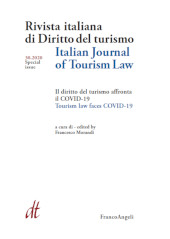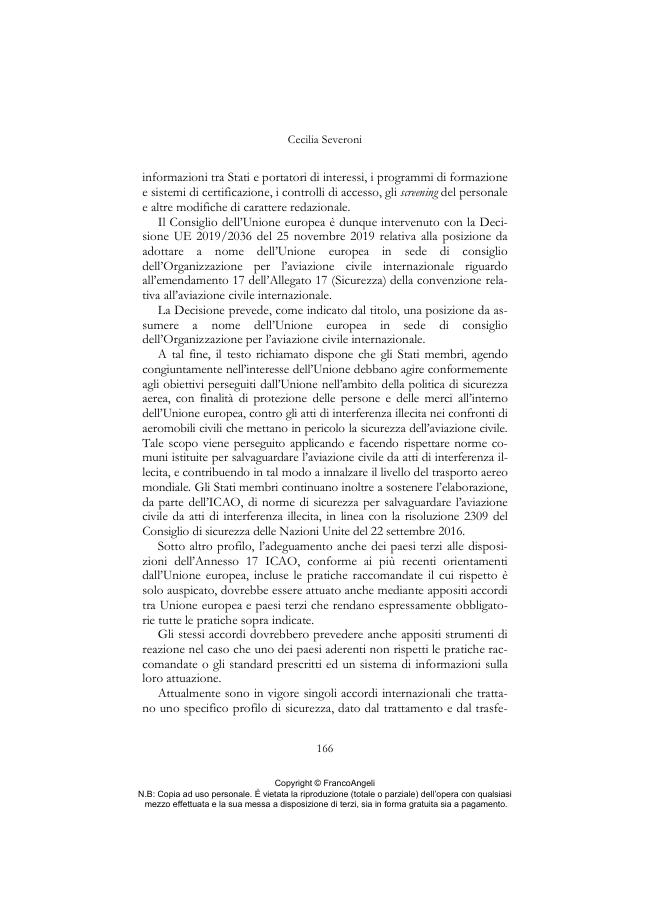La sicurezza dell'aviazione civile e i limiti alla libertà di circolazione : riflessioni a seguito della pandemia da COVID-19
148-184 p.
Il quadro normativo attuale in tema di sicurezza dell'aviazione civile è stato modificato in modo sostanziale dopo l'attacco alle torri gemelle e dispone un insieme di norme puntuali e dettagliate. Occorre tuttavia trovare un compromesso ragionevole tra l'obiettivo indicato della prevenzione, indagine, accertamento e repressione degli atti di terrorismo ed altri reati gravi e quello della protezione della libertà di circolazione e dei dati personali nel rispetto della vita privata degli interessati. In questa ottica la compressione del diritto alla protezione dei dati personali deve rispondere a regole chiare e deve essere strettamente proporzionale all'obiettivo da conseguire. Analoghe riflessioni possono oggi essere ripetute in merito ad una più recente applicazione del principio contenuto nell'art. 16, primo comma, Cost. in tema di libertà di circolazione.
Non sfugge, infatti, all'interprete l'analogia tra le restrizioni alla libertà di circolazione ed il diritto di muoversi liberamente derivante dalla normativa in materia di sicurezza dell'aviazione civile, e la più recente vicenda legata alla pandemia da Coronavirus che ha imposto una limitazione alla libertà di circolazione delle persone: si tratta nei due casi di un compromesso dettato da motivi di sanità e sicurezza, circostanze accomunate dal legislatore costituzionale tra le ipotesi per le quali è possibile prevedere per legge una limitazione alla piena esplicazione dei diritti sopra ricordati. [Testo dell'editore].
The current regulatory framework for civil aviation safety has been substantially changed after the attack on the twin towers and relies on a set of precise and detailed rules. A reasonable compromise must therefore be found between the indicated objective of the prevention, investigation, detection and repression of acts of terrorism and other serious crimes and that of the protection of the freedom of movement and of personal data while respecting the privacy of the passengers. In this perspective, e.g., the compression of the right to the protection of personal data must comply with clear rules and must be strictly proportional to the objective to be achieved. Similar reflections can now be repeated regarding a more recent application of the principle contained in art. 16, first paragraph of the Italian Constitution on the subject of freedom of movement.
In fact, nothing gets past to the interpreter about the analogy between the restrictions on freedom of movement and the right to move freely deriving from the legislation on civil aviation safety, and the most recent event linked to the Coronavirus pandemic which imposed a limitation to the freedom of movement of persons: in both cases it is a compromise dictated by health and safety reasons, circumstances shared by the constitutional legislator among the hypotheses for which it is possible to provide by law a limitation to the full explanation of rights mentioned above. [Publisher's text].
-
Articles from the same issue (available individually)
-
Information
ISSN: 2039-9391



